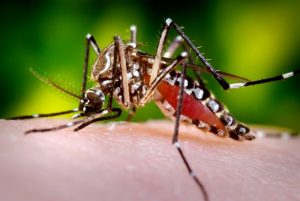NewsDesk @bactiman63
Dengue fever cases in Vietnam are increasing rapidly, currently there are about 92,000 cases, 36 deaths.
In a follow-up on the dengue fever outbreak in Vietnam, the Ministry of Health reported 15,000 additional cases in 10 days, bringing the outbreak total as of July 4 to 92,000.

There have been 36 deaths from dengue fever – an increase of 6 cases from 10 days earlier.
The Ministry of Health emphasized that now is the peak of the dengue epidemic season, the number of cases has continuously increased in many provinces and cities in recent weeks, mainly in the South and some provinces. city in the central region.
The Ministry of Health predicts that the number of dengue fever cases will continue to increase in the coming time and may explode on a large scale if it does not take drastic measures to prevent and control the disease.
As of the end of June, Ho Chi Minh City recorded 21,750 cases of dengue fever, an increase of more than 181% over the same period last year. The number of severe dengue cases was 3.7 times higher than last year with 346 cases.
Dengue is a viral infection transmitted by the bite of an infected mosquito. There are four closely related but antigenically different serotypes of the virus that can cause dengue (DEN1, DEN 2, DEN 3, DEN 4).
Dengue Fever (DF) – marked by an onset of sudden high fever, severe headache, pain behind the eyes, and pain in muscles and joints. Some may also have a rash and varying degree of bleeding from various parts of the body (including nose, mouth and gums or skin bruising).Dengue has a wide spectrum of infection outcome (asymptomatic to symptomatic). Symptomatic illness can vary from dengue fever (DF) to the more serious dengue hemorrhagic fever (DHF).
Subscribe to Outbreak News TV on YouTube
Dengue Hemorrhagic Fever (DHF) – is a more severe form, seen only in a small proportion of those infected. DHF is a stereotypic illness characterized by 3 phases; febrile phase with high continuous fever usually lasting for less than 7 days; critical phase (plasma leaking) lasting 1-2 days usually apparent when fever comes down, leading to shock if not detected and treated early; convalescence phase lasting 2-5 days with improvement of appetite, bradycardia (slow heart rate), convalescent rash (white patches in red background), often accompanied by generalized itching (more intense in palms and soles), and diuresis (increase urine output).
Dengue Shock Syndrome (DSS) — Shock syndrome is a dangerous complication of dengue infection and is associated with high mortality. Severe dengue occurs as a result of secondary infection with a different virus serotype. Increased vascular permeability, together with myocardial dysfunction and dehydration, contribute to the development of shock, with resultant multiorgan failure.
- Connecticut reports 1st monkeypox case in New Haven County resident
- Sri Lanka Crisis: Fuel and medicine shortages, food insecurity, civil unrest
- Hepatitis A: UNC scientists discover key to virus replication, show drug effectiveness
- New York City tops 100 monkeypox cases
- Florida: Four monkeypox cases in the Tampa Bay area, State total is 63
- H5N1 avian influenza linked to deaths of Maine seals: NOAA Fisheries
- Peru monkeypox tally now 15 after a dozen cases reported Monday
- Costa Rica reports increase in malaria in 2022

